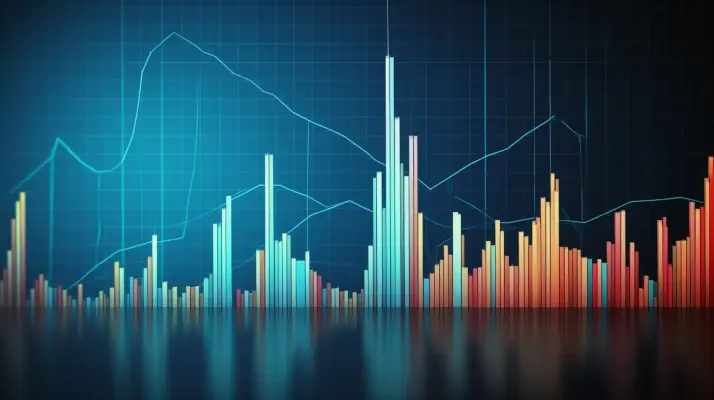
The Top Uses for Web Crawlers By Industry
December 18, 2023 | By David Selden-Treiman | Filed in: web-crawler-development.The TL-DR
There are a large number of web crawler project ideas that can help your business, whether you’re in real estate, manufacturing, finance, healthcare, travel, or another industry.
Table of Contents
- Introduction
- The Basics of Web Crawlers
- Custom Web Crawlers vs. Pre-made Solutions
- Financial Data Gathering and Analysis
- Real Estate Market Analysis
- Social Media and Sentiment Analysis
- Benefits of Web Crawlers for Car Dealerships
- Enhancing Manufacturing Efficiency
- E-commerce Price Monitoring
- Weather Forecasting with Web Crawlers
- Healthcare Industry Applications
- Travel Industry Insights
- Sports Analytics and Performance Tracking
- Education Sector Innovations
- Government and Public Policy
- Conclusion
- Need a Web Crawler?
Introduction
Imagine you are a car dealership looking to gain a competitive edge in a saturated market. You want to keep tabs on your competitors’ inventory, analyze pricing trends, and make data-driven decisions to stay ahead of the game. Or perhaps you’re a manufacturing company aiming to streamline your supply chain by tracking your suppliers’ pricing, inventory levels, and product updates. In both scenarios, having access to accurate and up-to-date data can be the key to success.
This is where web crawlers come into play. Web crawlers, also known as spiders, bots, or scrapers, are programs that systematically navigate the internet, extracting relevant information from websites. They have the potential to revolutionize data gathering, analysis, and decision-making in various industries.
In this section, we will provide an overview of web crawlers and explore their potential in transforming data-driven practices in business. We will dive into the basics of web crawlers, their navigation techniques, and how they extract information from websites. We will also discuss the advantages of custom web crawlers over pre-made solutions, highlighting the flexibility and tailored functionality that custom programming can offer.
So, whether you’re a car dealership, a manufacturing company, a financial institution, or involved in any other industry, this article will guide you through the potential applications and benefits of web crawlers in your specific sector. Let’s get started!
The Basics of Web Crawlers
In this section, we will delve into the fundamental concepts of web crawlers and provide you with a solid understanding of their inner workings. Web crawlers, also known as web spiders or web robots, are automated programs designed to systematically browse and gather information from websites across the internet. Whether you’re a business looking to gather market data or a researcher seeking information for a study, web crawlers can be a valuable tool in your arsenal.
How Web Crawlers Navigate Websites
Web crawlers begin their journey by starting at a specific webpage known as the seed URL. From there, they follow hyperlinks within the page to access other pages on the same website. These links provide the crawler with paths to explore, enabling it to traverse through various interconnected webpages. Think of it as a spider spinning its web across the internet, weaving through pages and threads of information.
Let’s take an example to illustrate this further. Imagine you want to create a web crawler to gather data on cars from various car dealership websites. You might start by providing a seed URL of a particular car dealership’s website. The web crawler would then follow links to access individual car listings, specifications, pricing information, and other relevant details.
Extracting Information with Web Crawlers
As web crawlers navigate websites, their primary task is to extract the desired information from each page they visit. This can include text, images, links, metadata, and more. Once the crawler accesses a webpage, it inspects the HTML code and applies specific pattern-matching algorithms, such as regular expressions, to identify and extract the relevant data.
Continuing with our car dealership example, let’s say you want to gather information on car models, year of manufacture, prices, and mileage. The web crawler would analyze the HTML structure of the car listing pages, identify the relevant data elements based on patterns, and extract this information for further processing. This extracted data can then be stored in a structured format, such as a database or spreadsheet, for analysis and decision-making.
Handling Different Types of Content
Web crawlers encounter a wide range of content types as they traverse through websites, from text-based articles to images, videos, and interactive elements. To ensure proper handling of these varying content types, web crawlers need to be programmed accordingly.
For instance, if a web page contains images relevant to your data collection, your web crawler can utilize image processing techniques to extract and analyze these visual elements. Alternatively, if the website incorporates JavaScript-based interactivity, your crawler may need to employ techniques like headless browsing or DOM parsing to interact with and extract dynamically generated content.
It’s essential to tailor your web crawler to handle different types of content based on your specific requirements and the websites you aim to explore. This adaptability allows you to capture the full breadth of information available on the internet.
So, in this section, we have covered the fundamental concepts of web crawlers, including how they navigate websites, extract information, and handle various types of content. The next section will discuss the advantages of custom web crawlers over pre-made solutions, emphasizing the flexibility and tailored functionality that custom programming can offer. Stay tuned!
Custom Web Crawlers vs. Pre-made Solutions
Web crawling technology has revolutionized data gathering and analysis, offering businesses unprecedented access to valuable information for decision-making. When it comes to developing a web crawler, businesses have two options: using pre-made solutions or custom programming. In this section, we will explore the advantages of custom web crawlers over pre-made solutions and highlight the flexibility and tailored functionality that custom programming can offer.
Tailored Functionality for your Business Needs
Custom web crawlers provide the opportunity to design a solution that aligns perfectly with your business requirements. With custom programming, you can tailor the crawler to extract specific data points, target specific websites, and handle any unique challenges or complexities that your business may encounter. This level of customization ensures that you obtain the precise information you need, enabling more accurate analysis and informed decision-making.
For example, consider a car dealership that wants to monitor its competitors’ inventory and pricing trends. By developing a custom web crawler, the dealership can extract data from various car dealership websites, focusing on specific makes, models, and geographic locations. This targeted approach allows them to gather competitive intelligence and gain a competitive edge in the market.
Flexibility for Long-Term Analysis and Large-Scale Collection
One of the main advantages of custom web crawlers is their flexibility and scalability. When utilizing pre-made solutions, businesses often face limitations in terms of the number of websites they can crawl, the frequency of data updates, and the level of customization available.
With custom programming, businesses can overcome these limitations and build a crawler that suits their long-term analysis and large-scale collection needs. Whether you need to crawl thousands of websites daily or require real-time updates, a custom web crawler can be designed to handle such demands.
For instance, a financial institution aiming to gather and analyze market data can develop a custom web crawler that extracts data from various financial news websites, social media platforms, and regulatory portals. By continuously monitoring these sources, the institution can stay ahead of market trends, make more informed investment decisions, and effectively manage risk.
Optimized Performance and Efficiency
Custom web crawlers offer unparalleled performance optimization and efficiency. By focusing on the specific needs of your business, you can create a crawler that is both faster and more accurate, reducing the time and effort required for data gathering and analysis.
For instance, an e-commerce business aiming to monitor competitor prices and product availability can develop a custom web crawler that precisely targets the required data points on competitor websites. This targeted approach eliminates unnecessary data and ensures that the crawler operates efficiently, providing real-time insights for effective pricing strategies and better market positioning.
Conclusion
While pre-made solutions can be helpful in certain scenarios, custom web crawlers provide businesses with a unique advantage in terms of tailored functionality, flexibility, and optimized performance. By investing in custom programming, businesses can develop crawlers that deliver the precise data needed for informed decision-making, gain a competitive edge in their industries, and unlock the full potential of web crawling technology.
Financial Data Gathering and Analysis

Financial institutions, such as banks, investment firms, and hedge funds, heavily rely on accurate and timely information to make informed decisions in the fast-paced world of finance. Web crawling, with its ability to gather data from various sources, has emerged as a valuable tool for financial data gathering and analysis.
Extracting Market Data
Web crawlers can be programmed to navigate financial websites, news portals, and market data platforms, extracting real-time information on stock prices, exchange rates, commodities, and more. By aggregating data from multiple sources, financial institutions can gain comprehensive insights into market trends, volatility, and investment opportunities. For example, a custom web crawler could extract stock prices, dividend yields, and financial ratios of companies listed on various exchanges, enabling financial analysts to evaluate and compare investment options efficiently.
News Monitoring
Keeping track of news related to financial markets is crucial for making well-informed investment decisions. Web crawlers can be trained to scrape news articles from reputable sources, such as financial newspapers and business websites, providing financial institutions with the latest market updates, economic indicators, and company announcements. By gathering a vast amount of relevant news articles, web crawlers empower financial analysts to analyze trends, identify market-moving events, and assess potential impacts on investments.
Social Media Sentiment Analysis
Social media platforms have become a source of valuable insights into public sentiment and market perceptions. Web crawlers can be customized to extract data from social media platforms, monitoring discussions, mentions, and sentiment related to specific financial instruments, companies, or even market trends. By analyzing the sentiment expressed by users on social media, financial institutions can gauge market sentiment and identify potential shifts in investor sentiment before it becomes reflected in stock prices. For example, a web crawler could collect tweets about a particular company’s new product launch, helping financial analysts assess how consumers perceive the product and predict its potential impact on the company’s stock performance.
Risk Management
Web crawling plays a vital role in risk management for financial institutions. By collecting and analyzing data from various sources, including regulatory filings, annual reports, and market data platforms, web crawlers can provide financial institutions with a comprehensive view of potential risks. For instance, a custom web crawler could monitor changes in regulatory guidelines and update the institution’s risk assessment accordingly. Additionally, by tracking bankruptcies, mergers, and acquisitions, web crawlers can help financial institutions assess the creditworthiness of counterparties and make informed decisions regarding lending or investment activities.
Web crawling enables financial institutions to extract and analyze vast amounts of data quickly and efficiently. By leveraging the power of web crawling technology, financial analysts can access real-time market data, track news developments, gauge public sentiment, and effectively manage risks. With these insights, financial institutions can make better investment decisions, react promptly to market changes, and ultimately gain a competitive advantage in the dynamic financial landscape.
Real Estate Market Analysis

Web crawlers have become valuable tools for real estate agents looking to gain a competitive edge in the market. By utilizing web crawling techniques, agents can gather data on property listings, track market trends, and conduct competitor analysis, all of which contribute to more informed decision-making and enhanced client services.
Gathering Data on Property Listings
Web crawlers enable real estate agents to efficiently gather data on property listings from various sources on the internet. These crawlers can navigate through real estate websites, extract information on properties such as location, pricing, size, amenities, and more. By aggregating this data, agents can quickly access a comprehensive database of available properties, saving time and effort in the search for the perfect listing.
For example, a web crawler can periodically scan real estate websites, collecting information on newly listed properties or any changes to existing listings in a particular area. This allows agents to stay up-to-date with the latest offerings and act quickly when a desirable property becomes available.
Monitoring Market Trends
Understanding market trends and dynamics is crucial for real estate agents to make informed decisions. Web crawlers can help agents stay informed by gathering data on property prices, sales volumes, market fluctuations, and other relevant indicators. By analyzing this data, agents can identify emerging trends, predict market movements, and adjust their strategies accordingly.
For instance, a web crawler can collect data on historical property prices in a specific neighborhood. By analyzing this data over time, agents can identify patterns and fluctuations in prices, helping them determine the best time to buy or sell a property.
Competitor Analysis
Web crawlers empower real estate agents to conduct thorough competitor analysis to gain a competitive edge in the market. By monitoring other agents or agencies, web crawlers can extract data on their property listings, pricing strategies, marketing tactics, and customer reviews. This information allows agents to compare themselves against competitors, identify gaps in the market, and differentiate their services effectively.
For example, a web crawler can scrape data from competitor websites and analyze their pricing strategies. This data can help agents determine competitive pricing for their properties and adjust accordingly to attract more buyers or tenants.
Enhanced Decision-Making and Client Services
By leveraging the data gathered through web crawlers, real estate agents can make more informed decisions and provide enhanced client services. The ability to access a wealth of information on property listings, market trends, and competitors allows agents to offer personalized recommendations to clients, based on their specific needs and preferences.
For instance, armed with comprehensive market data, an agent can provide clients with detailed insights into property investment opportunities, market conditions, and potential risks. This level of expertise adds value to the client-agent relationship and increases the likelihood of successful transactions.
In conclusion, web crawlers have revolutionized real estate market analysis by enabling agents to gather data on property listings, monitor market trends, conduct competitor analysis, and make more informed decisions. By harnessing the power of web crawling, real estate agents can enhance their client services and stay ahead in a highly competitive industry.
Social Media and Sentiment Analysis

In today’s digital age, social media platforms have become powerful tools for businesses to connect with their audience, build brand reputation, and drive marketing strategies. However, extracting valuable insights from the vast amount of data available on social media can be a daunting task. This is where web crawling and sentiment analysis can play a crucial role.
Extracting Data from Social Media Platforms
Web crawling allows businesses to systematically scrape data from social media platforms, such as Facebook, Twitter, Instagram, and LinkedIn. By crawling through these platforms, businesses can collect information such as user profiles, posts, comments, likes, shares, and more. This wealth of data provides valuable insights into customer sentiment, brand perception, and emerging trends.
For example, an e-commerce company can crawl through social media platforms to monitor customer feedback and reviews about their products or services. By analyzing sentiment and identifying patterns in the data, they can gain a deep understanding of customer preferences, pain points, and satisfaction levels. This information can then be used to refine marketing strategies, improve products, and deliver better customer experiences.
Sentiment Analysis: Understanding Customer Emotions
Sentiment analysis, also known as opinion mining, is a technique that analyzes text data to determine the sentiment or emotion expressed. By applying machine learning algorithms and natural language processing, sentiment analysis can categorize social media posts, comments, and reviews as positive, negative, or neutral.
For instance, a hotel chain could utilize sentiment analysis to analyze customer reviews on social media platforms. By automatically classifying reviews as positive, negative, or neutral, they can identify common issues or areas of improvement. This information can help the hotel chain take targeted action to address customer concerns, enhance service quality, and ultimately improve their reputation.
Leveraging Insights for Effective Marketing Strategies
By combining web crawling and sentiment analysis, businesses can uncover valuable insights and glean actionable intelligence. These insights can inform marketing strategies, brand positioning, and customer engagement initiatives.
For example, a clothing retailer can crawl through social media to monitor trending fashion styles and gather customer feedback on different collections. By analyzing sentiment around specific products or styles, the retailer can identify emerging trends, adjust their inventory, and tailor their marketing campaigns accordingly. This not only helps them stay ahead of the competition but also ensures that they are meeting their customers’ preferences.
Moreover, web crawling and sentiment analysis can be used to track brand perception, monitor competitor activities, and identify influencer partnerships. By keeping a pulse on social media conversations, businesses can stay informed about market trends, customer needs, and opportunities for innovation.
In conclusion, web crawling and sentiment analysis offer businesses a powerful means to extract valuable data and insights from social media platforms. By harnessing this information, businesses can gain a deep understanding of customer sentiment, shape effective marketing strategies, and build a strong brand presence. Embracing web crawling and sentiment analysis enables businesses to stay competitive in an increasingly digital and dynamic marketplace.
Benefits of Web Crawlers for Car Dealerships

Web crawlers offer numerous advantages to car dealerships, enabling them to stay ahead of the competition and make informed business decisions. By leveraging web crawling technology, car dealerships can gain valuable insights into their competitors’ inventory, analyze pricing trends, and ultimately gain a competitive edge in the market.
Monitoring Competitors’ Inventory
One of the key benefits of web crawlers for car dealerships is the ability to monitor their competitors’ inventory effectively. With a custom web crawler in place, car dealerships can automatically gather data on their rivals’ vehicle listings, including make, model, year, mileage, features, and pricing. This data can then be analyzed and compared to the dealership’s own inventory, allowing for a comprehensive understanding of the market landscape.
For example, let’s say a car dealership wants to keep tabs on their main competitors in the area. By employing a web crawler, they can automatically extract and store information about the rival dealers’ inventory. This data can then be analyzed to identify any gaps in their own inventory, uncover popular models, or even spot emerging trends.
Analyzing Pricing Trends
Another significant advantage of web crawlers in the automotive industry is their ability to analyze pricing trends. Car dealerships can utilize web crawling technology to gather data on competitors’ pricing strategies, discounts, and promotional offers to gain a clear understanding of the market’s dynamics. This information can help dealerships set competitive prices for their own inventory or adjust their pricing strategies based on changing market conditions.
For instance, a car dealership may notice a competitor offering steep discounts on certain models. By tracking this pricing trend through a web crawler, the dealership can quickly adapt their own pricing strategy to remain competitive or consider alternative marketing techniques to attract customers.
Gaining a Competitive Edge
By combining the insights gained from monitoring competitors’ inventory and analyzing pricing trends, car dealerships can gain a significant competitive edge in the market. Armed with comprehensive knowledge of the market landscape, dealerships can make data-driven decisions that optimize their inventory, pricing, and marketing strategies.
For example, a car dealership may identify a high-demand vehicle model based on the data collected through their web crawler. With this information, they can proactively source and stock up on that model to meet customer demand and potentially generate higher profits.
In addition, web crawlers can help car dealerships stay up to date with the latest industry news, product launches, and customer reviews. By staying informed about competitors’ activities, dealerships can make timely adjustments to their business strategies and ensure they meet customer expectations effectively.
In conclusion, web crawlers provide car dealerships with a powerful tool to monitor competitors, analyze pricing trends, and ultimately gain a competitive edge in the market. By employing custom web crawling solutions, dealerships can gather valuable data that enables them to make data-driven decisions, optimize inventory, and outperform their competitors.
Enhancing Manufacturing Efficiency

Manufacturing companies can greatly benefit from leveraging web crawling technology to optimize their supply chain management processes. By utilizing custom web crawlers, manufacturers can efficiently monitor suppliers’ pricing, track inventory levels, and stay updated on product updates.
Streamlining the Supply Chain
With web crawling, manufacturers can automate the process of gathering data from various suppliers’ websites. This enables them to compare prices, identify fluctuations, and negotiate better deals. By keeping a close eye on pricing trends, manufacturers can make informed decisions about purchasing materials and components, ultimately reducing costs and improving profitability.
Real-Time Inventory Management
Web crawling allows manufacturers to stay updated on suppliers’ inventory levels in real-time. By continuously monitoring suppliers’ websites, manufacturers can ensure that they have the necessary raw materials and parts available when needed, avoiding delays in production or excessive inventory holding. This level of inventory visibility helps manufacturers to maintain optimal stock levels and prevent shortages or surpluses.
Product Updates and Innovations
Web crawlers can also help manufacturers stay informed about their suppliers’ latest product updates and innovations. By monitoring suppliers’ websites for new product releases or improvements, manufacturers can quickly assess whether these updates would benefit their own manufacturing processes. This proactive approach enables manufacturers to stay competitive by adopting new technologies or exploring alternative suppliers if necessary.
Customizable Reporting and Analytics
One of the advantages of custom web crawlers is the ability to gather specific data that is relevant to a manufacturer’s unique needs and goals. By customizing the crawler to extract specific information such as lead times, delivery terms, or product specifications, manufacturers can generate comprehensive reports and analytics to support decision-making and performance evaluation.
Example: Automotive Manufacturing
Consider an automotive manufacturer who relies on multiple suppliers for different components of their vehicles. By implementing a custom web crawler, they can monitor the pricing, inventory levels, and product updates of each supplier. This allows them to identify cost savings opportunities, ensure timely availability of parts, and stay on top of any potential supply chain disruptions. Moreover, by tracking technological advancements from their suppliers, the manufacturer can explore opportunities for enhancing their own product offerings.
In conclusion, web crawling offers manufacturers a valuable tool for optimizing their supply chain management processes. By leveraging custom web crawlers, manufacturers can streamline their supply chain, monitor supplier pricing and inventory, and stay abreast of product updates and innovations. This not only improves operational efficiency but also enables manufacturers to make well-informed decisions, respond quickly to market changes, and maintain a competitive edge in their industry.
E-commerce Price Monitoring
In the fast-paced world of e-commerce, staying competitive is key to success. One way that e-commerce businesses can gain an edge over their competitors is through effective price monitoring. By keeping a close eye on competitor prices, product availability, and customer reviews, businesses can make informed decisions to optimize their pricing strategies and improve their market positioning. And this is where web crawling comes into play.
The Power of Web Crawling in E-commerce
Web crawling enables e-commerce businesses to automatically collect and analyze vast amounts of data from different websites. By utilizing custom web crawlers, businesses can continuously monitor competitor websites and extract valuable pricing information for various products or services. This allows them to stay up-to-date with the latest market trends, observe pricing patterns, and adjust their prices accordingly to attract more customers without compromising their profitability.
Tracking Competitor Prices
With web crawling, e-commerce businesses can effortlessly compare their prices with those of their competitors. By consistently monitoring the competition, businesses can identify opportunities to offer more competitive prices or create special promotions to entice customers. For example, if a competitor lowers the price of a popular product, a business can quickly adjust its pricing strategy to match or offer an even better deal. This level of real-time market intelligence can make a significant impact on a company’s sales and bottom line.
Monitoring Product Availability
In addition to price monitoring, web crawling can also help e-commerce businesses track the availability of products on competitor websites. By constantly checking stock levels or product availability, businesses can ensure that they are adequately stocked with popular items or identify opportunities to fill gaps in the market. For instance, if a competitor runs out of a particular product, a business can swiftly seize the opportunity to increase its own sales by offering the same product to customers who are seeking alternatives.
Leveraging Customer Reviews
Customer reviews play a crucial role in e-commerce. They not only influence a customer’s purchasing decision but also provide valuable insights into product quality, customer satisfaction, and overall brand reputation. Web crawling allows businesses to gather and analyze customer reviews from various platforms, including their competitors. By aggregating and analyzing this data, businesses can gain a deeper understanding of customer sentiment, identify areas for improvement, and make data-driven decisions to enhance their products or services.
Staying Ahead with Effective Pricing Strategies
By combining the insights gained from monitoring competitor prices, product availability, and customer reviews, e-commerce businesses can create and implement effective pricing strategies. For example, if a business identifies that a competitor consistently offers lower prices, they can opt for a price match or develop unique value propositions to highlight the advantages of purchasing from their platform. Similarly, businesses can adjust their pricing strategy based on customer feedback, ensuring they maintain a competitive advantage while meeting customer expectations.
Better Market Positioning and Increased Profitability
Ultimately, e-commerce businesses that leverage web crawling for price monitoring gain a competitive edge in the market. They can proactively assess market opportunities, identify areas for improvement, and make data-driven decisions to optimize their pricing strategies. This helps them position themselves as reliable and customer-centric brands, leading to increased customer satisfaction and loyalty. Moreover, by effectively monitoring prices and market trends, businesses can achieve better profit margins and ensure long-term success in the ever-evolving world of e-commerce.
In conclusion, web crawling offers e-commerce businesses the power to monitor competitor prices, analyze customer sentiment, and stay ahead of the curve in the competitive online marketplace. By harnessing the capabilities of custom web crawlers, businesses can not only optimize their pricing strategies for greater profitability but also improve their market positioning and offer exceptional customer experiences. With the potential of web crawling, e-commerce businesses can unlock valuable insights to make informed decisions, drive innovation, and achieve sustainable growth.
Weather Forecasting with Web Crawlers

This section will demonstrate how web crawlers can collect weather data from various sources, allowing businesses such as agriculture, logistics, and tourism to make informed decisions based on accurate and up-to-date information.
Gathering Accurate and Up-to-Date Weather Data
Web crawlers can be programmed to extract weather data from a range of sources, including meteorological websites, weather APIs, and even social media platforms. By crawling these sources on a regular basis, businesses can access the latest weather forecasts, historical data, and real-time information.
For example, an agricultural business can use web crawlers to gather data on temperature, humidity, rainfall, and wind speed. By analyzing this data, farmers can optimize irrigation schedules, determine the best time for planting and harvesting, and mitigate risks associated with adverse weather conditions.
Tailoring Weather Data for Business Needs
Web crawlers can be customized to target specific locations, timeframes, and weather variables. This level of customization allows businesses to gather weather data that is directly relevant to their operations and decision-making processes.
For instance, a logistics company may need to know the weather conditions along specific transportation routes to plan efficient deliveries. By using web crawlers to collect weather data for those routes, the company can optimize their scheduling, reduce the risk of delays caused by adverse weather, and provide accurate estimates to clients.
Applications in the Tourism Industry
The tourism industry heavily relies on weather conditions to attract visitors and offer enjoyable experiences. With web crawlers, tourism businesses can gather comprehensive weather data for various destinations, including temperature, precipitation, and even crowd levels.
For example, a tour operator can use web crawling to collect weather information for popular vacation spots. By analyzing this data, they can recommend the best time to travel based on weather patterns, which can impact activities such as beach visits, hiking trips, or outdoor events.
Enhancing Decision-Making with Weather Data
By utilizing web crawlers to collect weather data, businesses can make data-driven decisions to optimize their operations, mitigate risks, and provide better services to their customers.
For instance, an outdoor event organizer can monitor weather forecasts using web crawling techniques. If adverse weather conditions are predicted, they can reschedule or make contingency plans to ensure the safety and satisfaction of attendees.
Conclusion
In summary, web crawlers play a crucial role in weather forecasting by collecting accurate and up-to-date weather data from various sources. Businesses in industries such as agriculture, logistics, and tourism can leverage this data to make informed decisions, optimize operations, and enhance customer experiences. With web crawlers, businesses can stay ahead of weather-related challenges and capitalize on opportunities presented by favorable weather conditions.
Healthcare Industry Applications

In the healthcare sector, web crawling can be a powerful tool for gathering valuable data and insights. By harnessing the potential of web crawlers, healthcare professionals and organizations can access a wealth of information that can contribute to improved decision-making and patient care.
Gathering Data on Medical Research
Web crawling allows healthcare professionals to efficiently collect data on medical research from various sources. By crawling through reputable medical journals, publications, and research databases, they can stay updated on the latest advancements in their field. This enables them to stay ahead of the curve, incorporate new findings into their practices, and deliver high-quality care to their patients.
Tracking Disease Outbreaks
With the help of web crawlers, healthcare organizations can monitor and track disease outbreaks in real-time. By crawling through health department websites, news portals, and social media platforms, they can gather crucial information about the spread of diseases, emerging hotspots, and critical updates. This enables them to respond quickly and effectively, allocate resources where they are most needed, and implement preventive measures to protect public health.
Monitoring Patient Reviews
Web crawlers can also be utilized to monitor patient reviews and feedback across various platforms. By crawling through review websites, social media channels, and healthcare forums, medical practitioners and institutions can gain insights into patient experiences, satisfaction levels, and areas for improvement. This information can be invaluable for enhancing patient care, addressing concerns, and building stronger doctor-patient relationships.
Analyzing Healthcare Trends
By crawling through healthcare-related websites, forums, and news outlets, healthcare professionals and organizations can gain a comprehensive understanding of healthcare trends and developments. Analyzing this data can provide insights into emerging treatment methods, healthcare policies, and patient preferences. This information can help them make informed decisions regarding resource allocation, service improvements, and strategic planning.
Web crawling has the potential to revolutionize the healthcare industry by providing access to a vast amount of data that can fuel innovation, improve patient care, and drive better outcomes. From gathering data on medical research and tracking disease outbreaks to monitoring patient reviews and analyzing healthcare trends, web crawlers offer healthcare professionals and organizations an efficient and effective means of gathering actionable insights. By harnessing the power of web crawling, the healthcare industry can take significant strides forward in decision-making and patient care.
Travel Industry Insights

This section will focus on how travel agencies and tourism boards can leverage web crawlers to gather valuable data that can enhance their offerings and provide personalized travel experiences for their customers. With the help of web crawlers, travel industry professionals can access a wide range of information, such as data on destinations, hotel prices, customer reviews, and competitor analysis. By harnessing these insights, businesses can make more informed decisions and gain a competitive advantage in the market.
Gathering Data on Destinations
Web crawlers can benefit travel agencies and tourism boards by collecting comprehensive data on various travel destinations. Crawlers can navigate through travel websites, review platforms, and government tourism websites to extract information about popular tourist spots, local attractions, landmark events, and cultural highlights. This wealth of data can assist in creating well-rounded travel itineraries, offering customers a diverse and engaging travel experience.
Monitoring Hotel Prices
Price fluctuations in the hotel industry can significantly impact travel agencies and their clients. Web crawlers can keep a constant watch on hotel websites, aggregators, and online travel agencies to monitor pricing trends in real-time. By gathering this data, travel professionals can determine the best time to book accommodations, identify discounts or special offers, and provide customers with the most cost-effective options.
Analyzing Customer Reviews
Customer reviews play a crucial role in travel decision-making. Web crawlers can extract information from review platforms and social media channels to analyze customer sentiment and feedback. This valuable data can help travel businesses understand customer preferences, identify areas for improvement, and tailor their services to meet the specific needs and expectations of their target audience. By providing personalized recommendations based on customer reviews, travel agencies and tourism boards can enhance customer satisfaction and loyalty.
Competitor Analysis
In the highly competitive travel industry, understanding what your competitors are offering is vital to stay ahead. Web crawlers can collect data from competitor websites, including their pricing strategies, promotional offers, and unique selling points. This information allows travel agencies to gain insights into market trends, identify gaps in the market, and develop innovative travel packages that stand out from the competition. By leveraging web crawlers for competitor analysis, businesses can offer unique and enticing experiences to their customers, driving customer acquisition and retention.
By harnessing the power of web crawling technology, travel agencies and tourism boards can access a wealth of data to improve their operations, enhance customer experiences, and achieve a competitive edge in the market. Whether it’s gathering destination information, monitoring hotel prices, analyzing customer reviews, or conducting competitor analysis, web crawlers provide valuable insights that can transform the way the travel industry operates. With these innovative tools at their disposal, travel professionals can offer personalized travel packages, cater to customer preferences, and deliver unforgettable experiences to their clients.
Sports Analytics and Performance Tracking

In the sports industry, data plays a crucial role in developing winning strategies, scouting talented players, and engaging fans. With the help of web crawling, teams, athletes, and sports organizations can gather a wealth of information that can significantly impact their performance and decision-making processes.
Gathering Statistics and Performance Metrics
Web crawling allows sports analysts to extract statistical data and performance metrics from various sources such as sports websites, news articles, and match reports. This data can include details like player statistics, team rankings, match outcomes, and even historical records.
For example, imagine a soccer team looking to assess the performance of their strikers. By crawling multiple websites and aggregating relevant data, they can compare goal-scoring ratios, shooting accuracy, and other performance metrics to identify the most effective striker for their team.
Player Data and Scouting
Web crawling can also be invaluable for player scouting and talent identification. By scraping data from sports databases, forums, and social media platforms, teams can gather information about up-and-coming players, assess their skills, and determine their potential value.
For instance, a baseball team might use web crawling techniques to collect player data from various sources, such as their batting averages, pitching statistics, and fielding abilities. This extensive information enables teams to make more informed decisions when recruiting new talent and building a competitive roster.
Match Analysis and Team Strategies
With web crawling, sports organizations can analyze past match data and gain insights into their opponents’ strategies, strengths, and weaknesses. By examining patterns, formations, and tactical decisions, teams can adjust their game plans and develop strategies to counter their rivals effectively.
For instance, a basketball team competing against a strong offensive team could crawl data from previous matches to identify defensive patterns used against them. This information can be used to devise specific defensive strategies and improve their chances of success.
Fan Engagement and Personalization
Sports wouldn’t be the same without their passionate fanbase. Web crawling can help teams and organizations engage with their fans by providing personalized experiences and tailored content.
For example, a soccer club might crawl social media platforms to gather data on the interests, preferences, and demographics of their fanbase. This enables them to create targeted marketing campaigns, offer personalized discounts on merchandise, and provide exclusive content that resonates with their supporters.
The Power of Data-Driven Sports
Web crawling in the sports industry holds immense potential, revolutionizing the way teams analyze, strategize, and connect with their fans. By utilizing custom-developed crawlers, sports organizations can gather comprehensive data to gain a competitive edge, improve performance, and enhance the overall fan experience.
Whether it’s statistics and performance metrics, player scouting, match analysis, or fan engagement, web crawling opens up a world of possibilities for innovation and success in the sports industry.
Education Sector Innovations

In today’s digital age, web crawlers have become an invaluable tool for educational institutions and e-learning platforms. By harnessing the power of web crawling, these entities can gather a wealth of data on course offerings, student feedback, competitor analysis, and educational trends. This data can then be used to optimize teaching methods, enhance student engagement, and drive educational innovation.
Gathering Data on Course Offerings
Web crawlers can be programmed to navigate through various educational websites, scanning and collecting information on course offerings. This allows educational institutions to easily access comprehensive data on courses offered by different institutions, including course descriptions, prerequisites, and scheduling information. By aggregating this data, institutions can gain valuable insights into industry trends and identify gaps or opportunities in their own course offerings.
Analyzing Student Feedback
Web crawlers can also be employed to collect and analyze student feedback from various online sources such as forums, social media platforms, and course review websites. By aggregating and analyzing this feedback, educational institutions can gain a deeper understanding of student experiences, identify areas for improvement, and make data-driven decisions to enhance the quality of their programs.
For example, by using a web crawler to monitor student discussions about a specific course, an institution can identify recurring issues or concerns raised by students. This feedback can then be used to make necessary adjustments to the course curriculum, structure, or teaching methods, ultimately improving student satisfaction and learning outcomes.
Competitor Analysis in the Education Sector
In an increasingly competitive educational landscape, web crawlers can provide a significant advantage by enabling institutions to gather data on their competitors. By monitoring competitors’ websites, pricing models, program offerings, and marketing strategies, educational institutions can effectively assess their positioning in the market and make informed decisions to stay competitive.
For instance, a university looking to launch a new program can use a web crawler to gather data on similar programs offered by other institutions. This information can help them identify unique features or gaps in the market, allowing them to tailor their program to meet the needs and preferences of prospective students, giving them a competitive edge.
Tracking Educational Trends
Web crawlers can also be employed to gather data on educational trends, industry developments, and emerging technologies. By monitoring educational blogs, news websites, and research publications, educational institutions can stay up to date with the latest advancements in teaching methods, educational technologies, and pedagogical approaches.
This information can be invaluable for institutions seeking to innovate and improve their educational practices. For example, a university looking to incorporate online learning tools into their curriculum can use a web crawler to gather data on successful implementation strategies, best practices, and user reviews, helping them make informed decisions on adopting and optimizing e-learning platforms.
Optimizing Teaching Methods and Student Engagement
By leveraging the data collected through web crawling, educational institutions can optimize their teaching methods and enhance student engagement. For instance, by analyzing student performance data collected through web crawlers, educators can identify areas where students struggle the most and adjust their teaching strategies accordingly. This data-driven approach can lead to more personalized and effective learning experiences for students.
In addition, web crawlers can be used to gather data on student engagement with online learning platforms, such as tracking the time spent on different course materials, completion rates, and student interactions with course content. This data can provide valuable insights into student preferences, learning patterns, and areas where additional support may be needed.
In conclusion, web crawling offers numerous opportunities for educational institutions and e-learning platforms to gather data on course offerings, student feedback, competitor analysis, and educational trends. By leveraging this data, institutions can optimize their teaching methods, enhance student engagement, and drive innovation in the education sector. The application of web crawlers in education has the potential to revolutionize the way we teach and learn, creating more personalized and effective educational experiences for students worldwide.
Government and Public Policy

In today’s digital age, web crawling technologies have the potential to revolutionize the way governmental and public policy sectors gather and analyze data. By utilizing web crawlers, government agencies, policymakers, and public interest groups can access valuable information on legislation, public sentiment, public services, and policy developments. This data-driven approach enables better decision-making, citizen engagement, and the formulation of effective policies.
Gathering Data on Legislation
Web crawling allows government entities to efficiently extract vast amounts of legislative data from official websites, saving time and resources. By crawling through legislative databases, web crawlers can collect information regarding bills, laws, regulations, and their amendments. This data can then be leveraged for comprehensive analysis, tracking the progress of legislation, studying historical trends, and identifying patterns.
Public Sentiment Analysis
Understanding public sentiment is vital in policymaking. Web crawling techniques can be applied to collect data from various social media platforms, news articles, blogs, and forums to gauge public opinions and attitudes towards specific policy issues. By analyzing sentiment, policymakers can gain insights into public perceptions, concerns, and preferences, helping them shape policies that align with the needs and desires of the population.
Monitoring Public Services
Web crawling can also be used to monitor the quality and availability of public services. By regularly crawling government websites, web crawlers can keep track of service updates, emergency alerts, and information regarding healthcare facilities, educational institutions, transportation systems, and more. This real-time data empowers policymakers to assess service performance, identify areas for improvement, and ensure efficient delivery of public services.
Tracking Policy Developments
Web crawlers can monitor sources such as official government websites, news portals, and industry publications to track policy developments in various sectors. By staying informed about emerging regulations, policy proposals, and political debates, policymakers can make well-informed decisions and adapt their strategies accordingly. Web crawlers can provide up-to-date information on policy trends, enabling policymakers to respond promptly to societal changes and public needs.
Web crawling in the governmental and public policy sectors offers a wide range of benefits. By harnessing the power of data, decision-makers can drive evidence-based policies that address societal challenges effectively. Furthermore, citizen engagement can be enhanced through transparency and open access to information. With robust web crawling solutions, government agencies, policymakers, and public interest groups can shape a responsive and inclusive policy environment.
Conclusion
Web crawlers have the potential to revolutionize data gathering, analysis, and decision-making in a wide range of industries. By harnessing the power of custom programming, businesses can create tailored web crawlers that offer flexibility and functionality beyond the capabilities of pre-made solutions.
In the car dealership industry, web crawlers can monitor competitors’ inventory, analyze pricing trends, and provide valuable insights for gaining a competitive edge. Similarly, manufacturers can streamline their supply chain by leveraging web crawling to track suppliers’ pricing, inventory levels, and product updates, resulting in enhanced efficiency and cost savings.
Real estate agents can utilize web crawlers to gather data on property listings, market trends, and competitor analysis, enabling more informed decision-making and improved client services. E-commerce businesses can benefit from web crawling by monitoring competitor prices, product availability, and customer reviews, allowing for effective pricing strategies and better market positioning.
Web crawlers can also be employed in sectors such as agriculture, logistics, and tourism to collect accurate and up-to-date weather data, enabling businesses to make informed decisions based on weather conditions. Financial institutions can use web crawling to gather and analyze market data, news, and social media sentiment, leading to better investment decisions and risk management.
In the healthcare industry, web crawling can gather data on medical research, disease outbreaks, patient reviews, and healthcare trends, providing valuable insights for improved decision-making and patient care. Travel agencies and tourism boards can leverage web crawlers to gather data on destinations, hotel prices, customer reviews, and competitor analysis, offering personalized travel packages and enhanced customer experiences.
By utilizing web crawling and sentiment analysis, businesses can extract valuable data from social media platforms, gaining insights into customer sentiment, brand perception, and trends for more effective marketing strategies. In the sports industry, web crawling can gather statistics, performance metrics, player data, and match analysis, leading to enhanced team strategies, player scouting, and fan engagement.
Educational institutions and e-learning platforms can employ web crawlers to gather data on course offerings, student feedback, competitor analysis, and educational trends, optimizing teaching methods and student engagement. In the governmental and public policy sectors, web crawling can be used to gather data on legislation, public sentiment analysis, monitoring public services, and tracking policy developments, resulting in better decision-making and citizen engagement.
In conclusion, web crawlers have the potential to transform various industries by enabling data-driven decision-making, innovation, and competitive advantage. With the ability to extract valuable information from the vast depths of the internet, custom-programmed web crawlers offer businesses the flexibility and functionality needed to stay ahead in today’s data-driven world. Embracing the power of web crawlers can unlock limitless possibilities, empowering businesses to make smarter decisions, garner deeper insights, and ultimately thrive in their respective sectors.
Need a Web Crawler?
Do you need a web crawler developed? At Potent Pages, we specialize in developing custom web crawlers for a variety of businesses. Let us know what you need using the form below and we’ll be in touch!

David Selden-Treiman is Director of Operations and a project manager at Potent Pages. He specializes in custom web crawler development, website optimization, server management, web application development, and custom programming. Working at Potent Pages since 2012 and programming since 2003, David has extensive expertise solving problems using programming for dozens of clients. He also has extensive experience managing and optimizing servers, managing dozens of servers for both Potent Pages and other clients.

Comments are closed here.